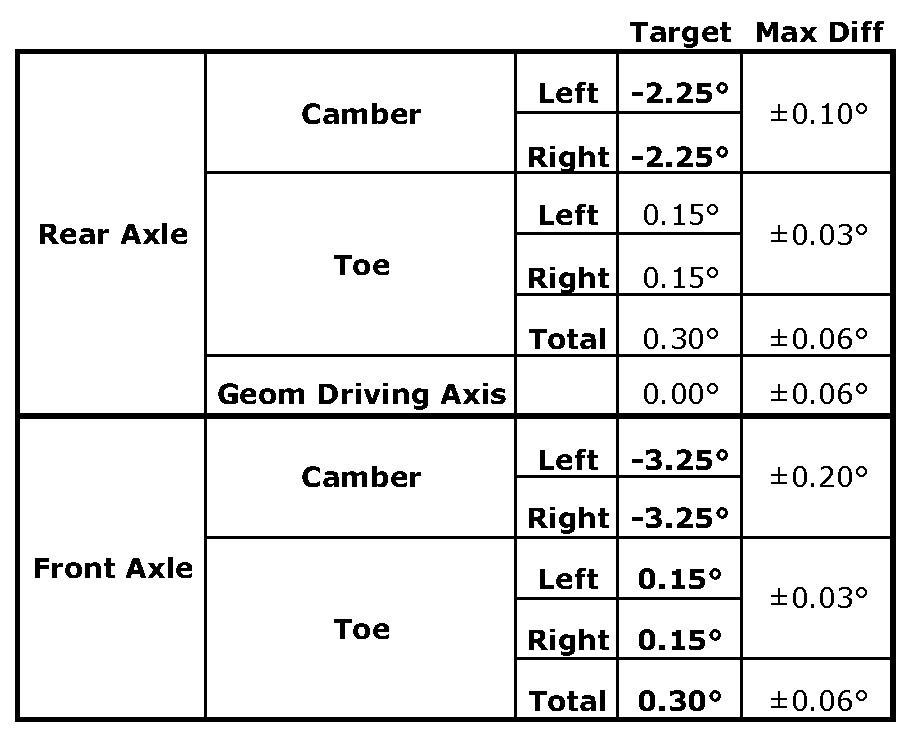Quote:
Originally Posted by Kgolf31

What toe are you planning on running in the rear?
|
This is what I currently plan to start with as a street alignment:

Here is something to consider though, to quote Milliken and Milliken in “Race Car Vehicle Dynamics” (pages 726-727):
"For many radial tires, 1.0° of camber produces about the same lateral force as 0.1° of steer (10:1). For bias-ply tires the effect is more pronounced: 1.0° of camber is equivalent to about 0.2° of steer (5:1). From this simple rule of thumb, it can be seen that static negative camber will require toe-out to keep the wheels from fighting each other."
With respect to rear camber, this argues that toe in and more negative camber are both stabilizing influences, whereas, toe out is destabilizing (increasing turn in). For no net effect with respect to stability you could try 0.1 degree of toe out from the standard toe setting for each -1.0 degree of negative camber you add.
I know there is a general aversion to recommending rear toe out, and it is worth approaching with care. Depends on the application too. What might be good on an auto slalom may be a handful on a high speed track. Anything up to 0.1 degree of toe out for each degree of negative camber (whether we are talking front or rear) should certainly not be considered radical though.
This rule of thumb is why I use decimal degrees to measure suspension angles. The relationship between angles is immediately apparent. That is not true if you used d:mm:ss or linear dimensions for toe.